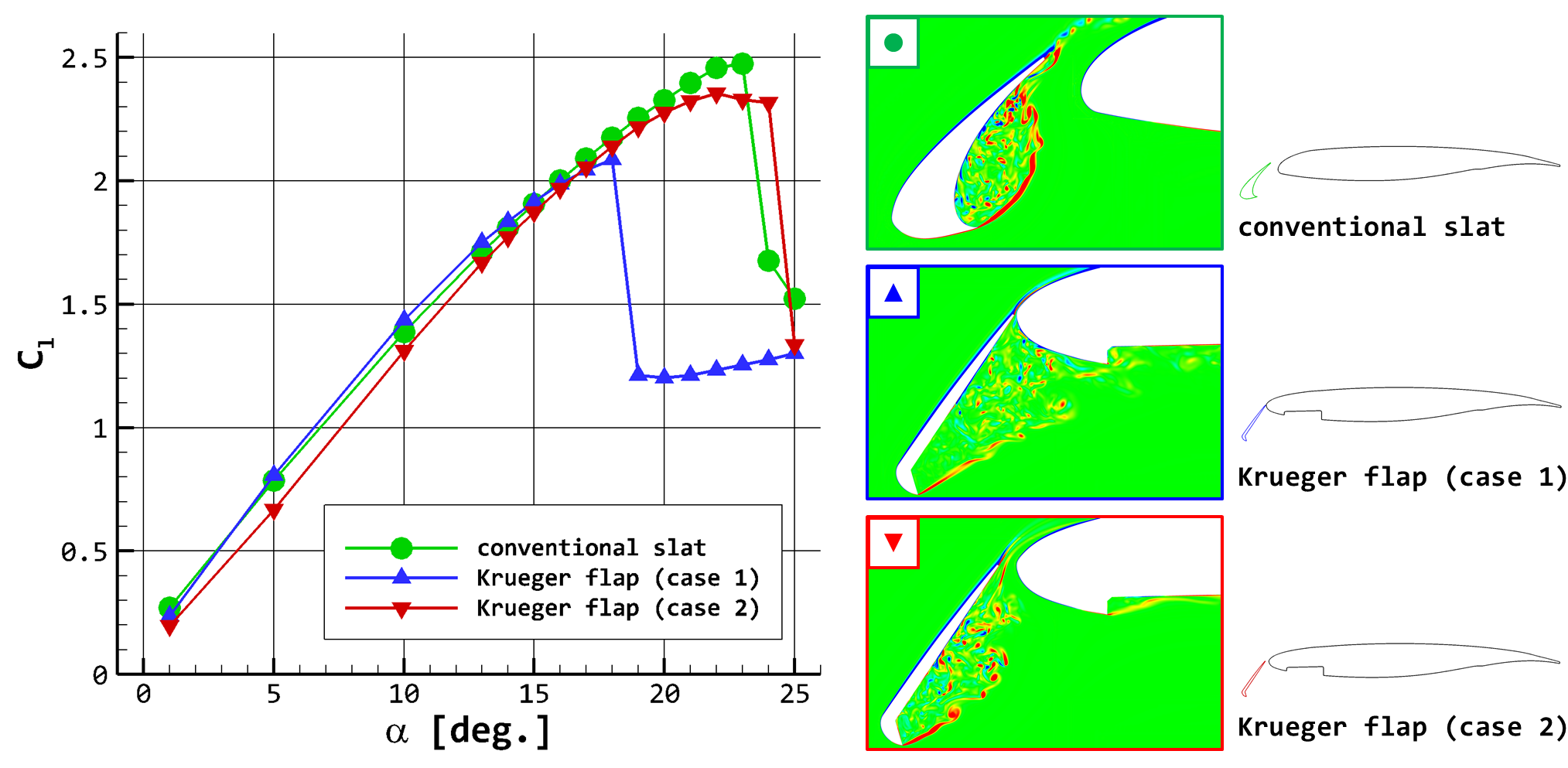Research for Aircraft Aeroacoustic Noise Prediction Technologies
JAXA Supercomputer System Annual Report April 2018-March 2019
Report Number: R18ETET27
Subject Category: Skills Acquisition System
- Responsible Representative: Yoshikazu Makino, Aviation Systems Research Unit, Aeronautical Technology Directorate
- Contact Information: Ryotaro Sakai(sakai.ryotaro@jaxa.jp)
- Members: Christian Nauck
Abstract
Innovative drag reduction technologies are investigated to reduce the fuel consumption for a conventional aircraft configuration. Aircraft noise prediction technologies and the conceptual design technologies are also developed for future aircraft which achieve low noise and high efficiency. In this research, aeroacoustic simulations have been conducted for a Krueger flap as an alternative to a conventional slat, in order to investigate its noise characteristics as well as aerodynamic performance.
Reference URL
Please refer to ‘Eco-wing technology | ECAT – Environment-Conscious Aircraft Technology Program | Aeronautical Technology Directorate‘.
Reasons for using JSS2
Due to high computational cost of an aeroacoustic simulation, the use of JSS2 is required to obtain multiple cases of the simulation within a limited period.
Achievements of the Year
A Krueger flap is a leading-edge high-lift device which works similarly to a conventional slat but deployed from the lower surface of the leading edge of the wing. In contrast to a conventional slat, a Krueger flap can keep the smoothed upper surface, thus it is considered as a high-lift device for future aircraft with drag reduction technologies associated with laminar flow control; however, its noise characteristics has not been intensively studied so far. In this research, Krueger flaps with different flap geometries and positions have been analyzed from the viewpoint of both aerodynamics and aeroacoustics. The results indicate the feasibility of a Krueger flap that provides comparable aerodynamic performance to a conventional slat with reduced noise levels.

Fig.1: Lift coefficients and instantaneous vorticity distributions of a conventional slat and Krueger flaps (alpha = 13.7 [deg.])
Publications
N/A
Usage of JSS2
Computational Information
- Process Parallelization Methods: MPI
- Thread Parallelization Methods: N/A
- Number of Processes: 1728
- Elapsed Time per Case: 100 Hour(s)
Resources Used
Fraction of Usage in Total Resources*1(%): 0.04
Details
Please refer to System Configuration of JSS2 for the system configuration and major specifications of JSS2.
| System Name | Amount of Core Time(core x hours) | Fraction of Usage*2(%) |
|---|---|---|
| SORA-MA | 377,907.96 | 0.05 |
| SORA-PP | 1,047.31 | 0.01 |
| SORA-LM | 18.42 | 0.01 |
| SORA-TPP | 0.00 | 0.00 |
| File System Name | Storage Assigned(GiB) | Fraction of Usage*2(%) |
|---|---|---|
| /home | 158.95 | 0.16 |
| /data | 3,255.21 | 0.06 |
| /ltmp | 651.04 | 0.06 |
| Archiver Name | Storage Used(TiB) | Fraction of Usage*2(%) |
|---|---|---|
| J-SPACE | 0.84 | 0.03 |
*1: Fraction of Usage in Total Resources: Weighted average of three resource types (Computing, File System, and Archiver).
*2: Fraction of Usage:Percentage of usage relative to each resource used in one year.
JAXA Supercomputer System Annual Report April 2018-March 2019


